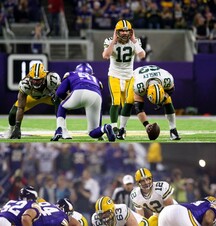
The paper examines the impact of covid-induced changes to crowd sizes on a subset of penalties in the NFL. That is the generic description. A more concrete description would be that the paper examines if it was easier, or harder, for Aaron Rodgers to fool defences with the cadence of his voice during covid. The results show that there was an impact of crowds on pre-snap defensive penalties but not on offensive penalties.
It is important to note the choice of penalties. Farnell argues that these are “nondiscretionary penalty calls” and that they are a “far cleaner assessment of player responses to crowd pressure, rather than conflating this with refereeing decisions”. Using the type of foul to separate the decisions of the referees from the decisions of the players has become standard in the literature. Another good example of this practice is a 2020 Judgment and Decision Making paper by Evan Polman, Lyn Van Swol and Paul Hoban. When considering conscious strategic fouling behaviour by players, the authors select “intentional grounding” as the exemplar.
These papers benefit from having fouls clearly defined, articulates, and recorded. Those who watch an NFL game can see the flags fly and can hear the referee articulate the reason for the call. Those who watched the UEFA Champion League final on Saturday or the Irish provincial finals on Sunday would love to have such information. However, I doubt if they would think the associated time delays worth the added information.
The Farnell paper is well worth a read for those interested in the NFL.
 RSS Feed
RSS Feed